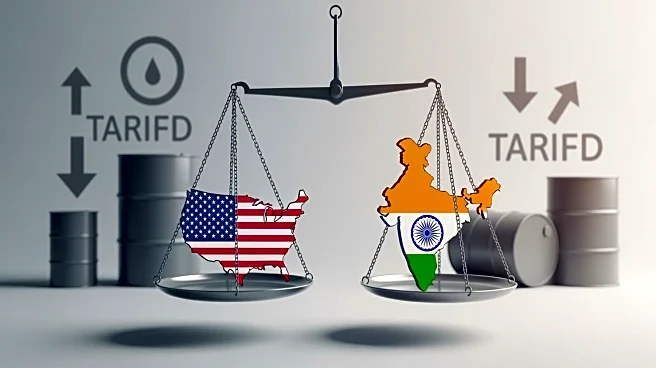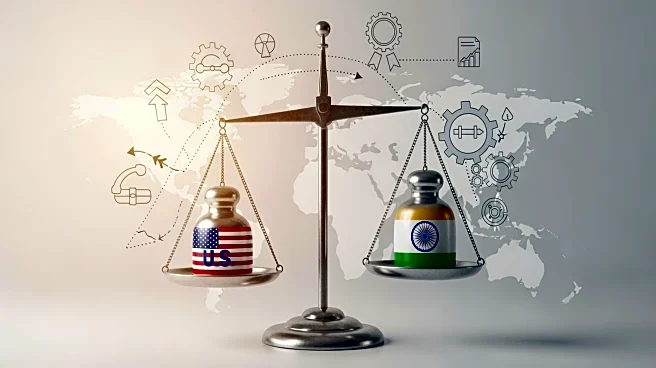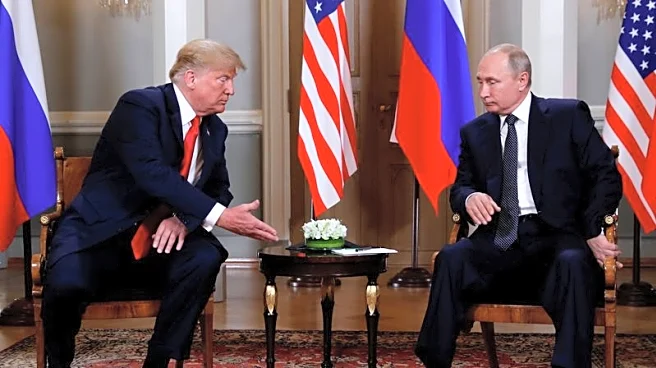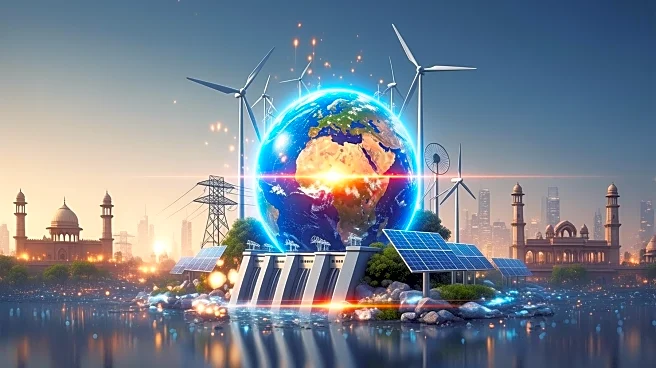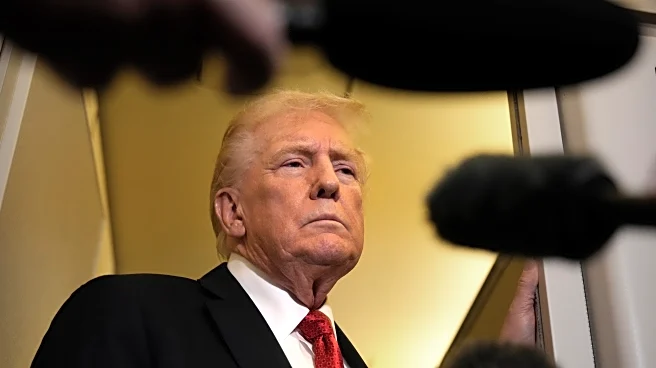What's Happening?
President Trump recently engaged in a conversation with Indian Prime Minister Narendra Modi, focusing on trade and energy issues. During the discussion, Modi reportedly assured Trump that India would reduce
its oil purchases from Russia, a move seen as aligning with U.S. interests in the ongoing Russia-Ukraine conflict. The talks also touched on a potential reduction in U.S. tariffs on Indian imports, which could drop from 50% to 15-16% as part of a broader trade agreement. This agreement is expected to include increased imports of U.S. corn and soymeal by India, addressing domestic demands in various sectors. The bilateral trade between the U.S. and India has seen significant growth, with a reported 11.8% increase year-on-year.
Why It's Important?
The discussions between President Trump and Prime Minister Modi are significant as they could reshape the economic and geopolitical landscape between the U.S. and India. A reduction in tariffs could enhance trade relations, benefiting industries in both countries. For the U.S., limiting India's oil purchases from Russia aligns with its strategic interests in the Russia-Ukraine conflict. For India, diversifying its energy sources and increasing agricultural imports could support domestic industries and reduce reliance on Russian oil. The potential trade agreement could also strengthen diplomatic ties and economic cooperation between the two nations.
What's Next?
The finalization of the trade agreement is anticipated to be announced at the upcoming ASEAN Summit. Both countries are working towards concluding the negotiations by November 2025. The Indian government is expected to informally advise state-run oil companies to diversify crude sourcing towards the U.S. The outcome of these negotiations could lead to significant shifts in trade policies and economic strategies for both countries.



